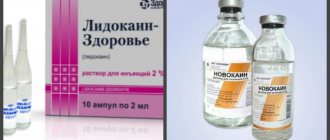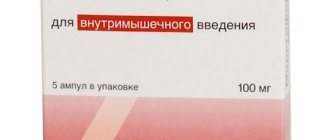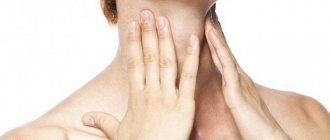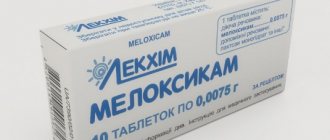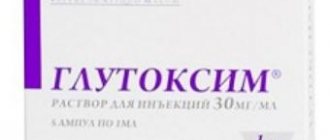General reactions:
- from the nervous system and sensory organs - dizziness and headaches, confusion, hallucinations, euphoria, paralysis of accommodation, disturbances of tactile sensations
- from the heart and blood vessels - ventricular and sinus tachycardia, myocardial ischemia, ventricular fibrillation
- from the gastrointestinal tract - intestinal atony, constipation, dry oral mucosa
- other adverse reactions - fever, urinary retention, photophobia
Local reactions:
- tingling sensation in the eyes, increased intraocular pressure
- irritation of the eyelids, hyperemia of the mucous membranes of the eye
- conjunctivitis
- paralysis of accommodation (pupil dilation)
With single administrations of a dose of atropine not exceeding 0.5 mg, paradoxical reactions from the parasympathetic nervous system, such as bradycardia and slowing of myocardial conduction, cannot be excluded. Atropine also reduces the pharmacological activity of m-cholinomimetics (for example, muscarine) and anticholinesterase drugs (physostigmine, proserine, etc.). The side effects of atropine are enhanced by the simultaneous use of tricyclic antidepressants, phenothiazines, antihistamines and other drugs with m-anticholinergic properties.
Narcotic effect
Atropine-containing drugs are anticholinergics widely used for recreational purposes. The narcotic effect is due to the high affinity of atropine for cholinergic receptors, which prevents their interaction with acetylcholine, a natural neurotransmitter. This leads to its accumulation in the synaptic cleft, inhibition of a number of parasympathetic effects and the functioning of the central nervous system with a predominance of adrenergic functions. As a result of this influence, various effects develop, the leading of which are hallucinogenic and psychomimetic.
Exceeding the dose of atropine leads to slight dizziness, muscle relaxation, a feeling of pleasant warmth throughout the body, and a hypomanic euphoric affect. The picture of drug intoxication with atropine is similar to the abuse of hashish or marijuana. To achieve euphoria, a person’s attitude towards the appropriate effect is important. The condition can last for several hours, after which the effect of the alkaloid decreases and a gradual withdrawal from it occurs. After drug intoxication, severe weakness, fatigue, a “drunk” or unsteady gait, headaches, and problems with the gastrointestinal tract are noted. If high doses of atropine were consumed, psychosis and metamorphopsia (motor agitation, exposure of the body, etc.) are observed.
The clinical picture of psychosis is characterized by symptoms of delirium (blurred consciousness, mental disorders, coma), cyanosis of the lips, pinpoint bruises in the forehead and chest, tachycardia, severe mydriasis and surges in blood pressure are often recorded. On average, acute psychosis lasts no more than 24 hours. Further, its residual manifestations may be unmotivated fears and increased anxiety, sleep disturbances. After a few days, these symptoms completely disappear.
Atropine sulfate tablets 0.0005 g
Release form: tablets (blister packs) 0.5 mg
Pharmacological group - m-anticholinergic
pharmachologic effect
- bronchodilator
- antiarrhythmic
- m-anticholinergic
- antiulcer
- antispasmodic
Ingredients - atropine 0.5 mg
Indications
- Gastrojejunal ulcer
- Pain in the abdomen and pelvis
- Pain localized in the upper abdomen
- Pain associated with urination
- Diseases of the eye and its adnexa
- Diseases of the vocal folds and larynx, not elsewhere classified
- Diseases of the gallbladder, biliary tract and pancreas
- Salivary gland disease
- Painful urination, unspecified
- Anomalies of pupillary function
- Asthma
- Asthma, unspecified
- Asthma with a predominance of an allergic component
- Secondary parkinsonism
- Bile duct stones without cholangitis or cholecystitis
- Bile duct stones with cholangitis
- Bile duct stones with cholecystitis
- Iridocyclitis
- Cholinesterase inhibitors
- Keratitis
- Keratoconjunctivitis
- Accommodation disorders
- Refractive and accommodation disorders
- Disorders of the secretion of the salivary glands
- Second degree atrioventricular block
- Complete atrioventricular block
- First degree atrioventricular block
- Atrioventricular (atrioventricular) block and left bundle branch block (His)
- Retinal vascular occlusions
- Pylorospasm, not elsewhere classified
- Renal colic, unspecified
- Acute bronchiolitis
- Acute pancreatitis
- Acute cholecystitis
- Poisoning by drugs, medications and biological substances
- Poisoning with drugs acting primarily on the autonomic nervous system
- Non-allergic asthma
- Peptic ulcer of unspecified localization
- Symptoms and signs related to the urinary system
- Symptoms and signs related to the digestive system and abdominal cavity
- Spasm of the larynx
- Mixed asthma
- Trauma to the eye and orbit
- Injuries, poisoning and some other consequences of external causes
- Chronic pancreatitis of alcoholic etiology
- Chronic cholecystitis
- Chorioretinal inflammation
- Chorioretinal inflammation, unspecified
- Cholecystitis
- Cholecystitis, unspecified
- Other and unspecified atrioventricular block
- Other parasympathomimetic (cholinergic) drugs
- Other diseases of the eye and its adnexa
- Other diseases of the pancreas
- Other diseases of the stomach and duodenum
- Other retinal arterial occlusions
- Other and unspecified abdominal pain
- Other superficial keratitis without conjunctivitis
- Other chronic pancreatitis
- Other forms of cholelithiasis
- Other forms of cholecystitis
- Cholelithiasis
- Corneal ulcer
- Duodenal ulcer
- Stomach ulcer
Composition by components
- atropine
Description
White crystalline or granular powder, soluble in water and alcohol.
Pharmacodynamics
An alkaloid contained in plants of the nightshade family, a blocker of m-cholinergic receptors. Prevents the stimulating effect of acetylcholine, reduces the secretion of the salivary, gastric, bronchial, lacrimal, sweat glands, and pancreas. Reduces the tone of the muscles of the gastrointestinal tract, bile ducts and gallbladder; causes tachycardia, improves AV conduction. After intravenous administration, the maximum effect appears after 2-4 minutes, after oral administration (in the form of drops) after 30 minutes. Stimulates the cerebral cortex (in high doses). Dilates the pupils, impedes the outflow of intraocular fluid, increases intraocular pressure, and causes paralysis of accommodation. The pupil dilated with atropine does not constrict when instilled with cholinomimetic drugs. Maximum pupil dilation occurs after 30-40 minutes and disappears after 7-10 days.
Pharmacokinetics
Communication with plasma proteins - 18%. Passes through the BBB. Excreted by the kidneys (50% unchanged).
Application
Peptic ulcer of the stomach and duodenum, pylorospasm, cholelithiasis, cholecystitis, acute pancreatitis, hypersalivation (parkinsonism, poisoning with heavy metal salts), spasms of the intestines and urinary tract, hepatic and renal colic, bronchial asthma, to prevent broncho- and laryngospasm, AV blockade , poisoning with m-cholinomimetics (fly agaric), anticholinesterase drugs, premedication before surgery. Locally (in ophthalmology): to examine the fundus of the eye, to dilate the pupil and achieve accommodation paralysis in order to determine the true refraction of the eye; for the treatment of iritis, iridocyclitis, choroiditis, keratitis, embolism and spasms of the central retinal artery and some eye injuries.
Dosage regimen
SC, IM or IV 0.25-1 mg 1-2 times a day. In ophthalmology: instill 1-2 drops of a 1% solution (in children a solution of a lower concentration is used) into the affected eye, frequency of application - up to 3 times with an interval of 5-6 hours. In some cases, a 0.1% solution is administered subconjunctivally 0.2-0.5 ml or parabulbar - 0.3-0.5 ml. Using electrophoresis, a 0.5% solution is administered through the eyelids or an eye bath.
Side effects
Dry mouth, mydriasis, intestinal atony, dizziness, tachycardia, difficulty urinating, hyperemia of the skin of the eyelids, photophobia, swelling of the conjunctiva of the eyelids and eyeball. Xerostomia, mydriasis, paralysis of accommodation, tachycardia, intestinal atony, bladder atony, headache, dizziness, loss of touch.
Contraindications
Hypersensitivity, angle-closure glaucoma, urinary disorders in prostate adenoma.
special instructions
When instilling the solution into the eye, it is necessary to press the lower lacrimal punctum to avoid the solution entering the nasopharynx. With subconjunctival or parabulbar administration, it is advisable to prescribe validol to reduce tachycardia.
Phases of poisoning
Intentional or accidental use of high doses of atropine leads to the development of acute poisoning. The condition develops within 15 minutes after taking the drug - its initial signs are dryness of the mucous membranes of the mouth and nose, thirst, hoarseness, hyperemia of the skin, and increased body temperature. Vomiting does not occur with atropine poisoning. The clinical picture of intoxication is divided into two phases, which are based on the effect of atropine on the central nervous system. Let's take a closer look at them.
Psychomotor agitation
Characterized by progressive disorders of the central nervous system. On the part of the eyes, mydriasis with residual reactions to light, photophobia, increased intraocular pressure, double vision before the eyes, and decreased visual acuity are observed. The person feels dizzy and increasingly intoxicated.
Psychomotor agitation progresses. The victim literally rushes about, tries to run away, reacts inadequately to what is happening with strange laughter, shouts, and tears. Against this background, hallucinations appear and intensify - both visual and tactile, symptoms of delirium, ataxia, and disorientation in space and time arise.
The stimulating effect on the central nervous system is complicated by pyramidal insufficiency, namely hypertonicity of muscles, tendon and pathological reflexes (Oppenheim, Babinsky). In extremely severe cases of poisoning, confusion, acute signs of psychosis, convulsions, and epileptic seizures are observed already at the first stage.
CNS depression
Begins 10 hours after consuming a high dose of atropine. Characterized by depression of the central nervous system. A person experiences confusion, even to the point of developing coma, tendon reflexes fade, and muscle weakness increases.
With atropine intoxication, pictures of delirium with pronounced agitation and changeable affect appear, as well as states of stupor, turning into stupor and coma. Atropine intoxication is often accompanied by tachycardia, dry mouth, mydriasis, paralysis of accommodation, trembling, and twitching in certain muscle groups.”
cscb.su
With severe poisoning, depression of the central nervous system manifests itself extremely sharply. In this case, the first phase of psychomotor excitation may be completely absent. After taking a toxic dose of atropine, a person experiences drowsiness and falls into deep sleep, against the background of which dyspnea and bradypnea appear - serious problems with breathing and cardiac activity. The condition is dangerous due to the development of cyanosis and asphyxia, pulmonary and cerebral edema. The mortality rate of patients in this case is high - the causes of death are respiratory arrest and acute cardiovascular failure.
Atropine
Use during pregnancy and breastfeeding
Atropine penetrates the placental barrier.
Adequate and strictly controlled clinical studies of the safety of atropine during pregnancy have not been conducted. When administered intravenously during pregnancy or shortly before birth, tachycardia may develop in the fetus.
Atropine is found in breast milk in trace concentrations.
Use for liver dysfunction
Use with caution in case of liver failure (decreased metabolism).
Use for renal impairment
Use with caution in case of renal failure (risk of side effects due to decreased excretion).
Use in children
Use with caution in chronic lung diseases, especially in young children and weakened patients (a decrease in bronchial secretion can lead to thickening of secretions and the formation of plugs in the bronchi); with brain damage in children, cerebral palsy, Down's disease (reaction to anticholinergic drugs increases).
special instructions
Use with caution in patients with diseases of the cardiovascular system, in which an increase in heart rate may be undesirable: atrial fibrillation, tachycardia, chronic heart failure, coronary artery disease, mitral stenosis, arterial hypertension, acute bleeding; with thyrotoxicosis (possible increased tachycardia); at elevated temperatures (may further increase due to suppression of the activity of the sweat glands); with reflux esophagitis, hiatal hernia, combined with reflux esophagitis (decreased motility of the esophagus and stomach and relaxation of the lower esophageal sphincter can slow down gastric emptying and increase gastroesophageal reflux through the sphincter with impaired function); for gastrointestinal diseases accompanied by obstruction - achalasia of the esophagus, pyloric stenosis (possibly decreased motility and tone, leading to obstruction and retention of gastric contents), intestinal atony in elderly or debilitated patients (possible development of obstruction), paralytic ileus; with an increase in intraocular pressure - closed-angle (mydriatic effect, leading to an increase in intraocular pressure, can cause an acute attack) and open-angle glaucoma (mydriatic effect can cause a slight increase in intraocular pressure; adjustment of therapy may be required); with nonspecific ulcerative colitis (high doses can inhibit intestinal motility, increasing the likelihood of paralytic intestinal obstruction, in addition, the manifestation or exacerbation of such a severe complication as toxic megacolon is possible); with dry mouth (long-term use may cause further increase in the severity of xerostomia); with liver failure (decreased metabolism) and renal failure (risk of side effects due to decreased excretion); for chronic lung diseases, especially in young children and weakened patients (a decrease in bronchial secretion can lead to thickening of secretions and the formation of plugs in the bronchi); with myasthenia gravis (the condition may worsen due to inhibition of the action of acetylcholine); prostatic hypertrophy without urinary tract obstruction, urinary retention or predisposition to it, or diseases accompanied by urinary tract obstruction (including bladder neck due to prostatic hypertrophy); with gestosis (possibly increased arterial hypertension); brain damage in children, cerebral palsy, Down's disease (reaction to anticholinergic drugs increases).
The interval between doses of atropine and antacids containing aluminum or calcium carbonate should be at least 1 hour.
With subconjunctival or parabulbar administration of atropine, the patient must be given a validol tablet under the tongue in order to reduce tachycardia.
Impact on the ability to drive vehicles and operate machinery
During the treatment period, the patient must be careful when driving vehicles and engaging in other potentially hazardous activities that require increased concentration, speed of psychomotor reactions and good vision.
How to store?
Atropine sulfate in any dosage form should be stored in a dark place. It is better not to place in the refrigerator or freezer. The optimal temperature for storing the drug at home is room temperature (not higher than 25 degrees Celsius).
Analogue drugs
The medicine has analogues that are similar to it in terms of the mechanism of action:
- Bellacehol;
- Appamide Plus;
- Cyclomed;
- Hyoscyamine;
- Cycloptic;
- Midrimax.
Best before date
Atropine, like all medicines, has an expiration date, which the manufacturer must indicate on the packaging.
Atropine sulfate is available in the form of eye drops and ointment, as well as in the form of injection, tablets and oral solution. The shelf life of eye drops is 3 years, and the suitability of the solution for injection is 5 years.
If the storage time ends after 5-10 days, then the drug can still be used if there are no signs of spoilage. When the shelf life has expired, atropine should not be used. In this case, the medicine may not help or even harm.
IMPORTANT : If storage conditions do not meet standards, the medicine may become unusable before the prescribed time.
You can tell that atropine is defective or spoiled by its appearance. A suitable liquid form of medicine appears as a clear, colorless solution. An unusable drug may have a sediment or tint. Spoiled tablets may crumble in your hands.
Another important detail is that the packaging indicates the expiration date of the unopened medicine, but if you open the injection solution, it must be used immediately, and an opened bottle of atropine eye drops must be used within one month.
